'A tribute that will go down in Australian history'
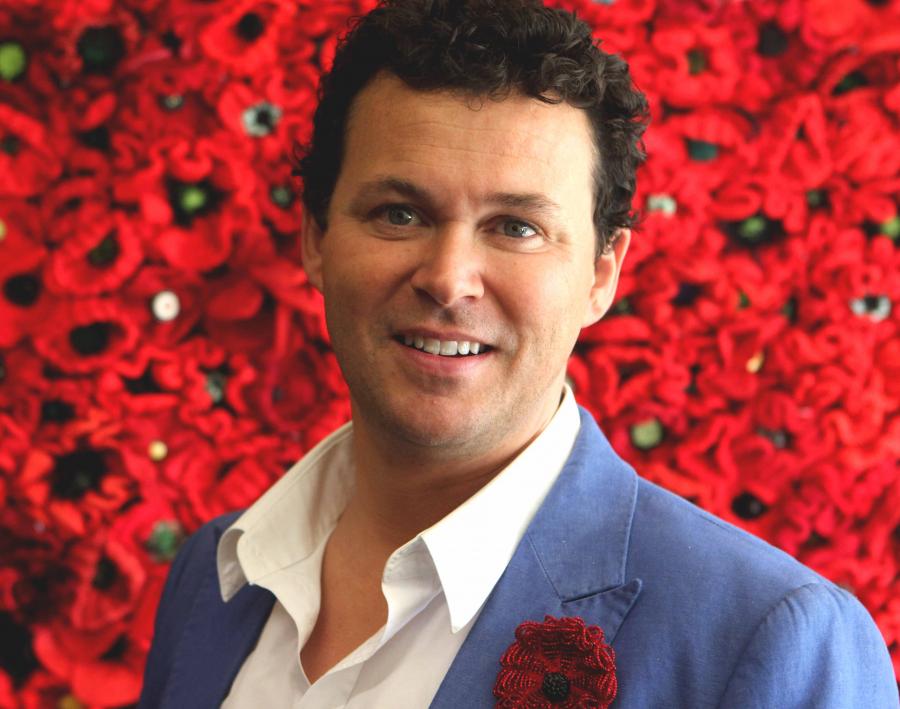
Landscape designer Phillip Johnson: "To help bring this amazing community project to the Australian War Memorial has been an absolute honour.”
When Phillip Johnson and the team behind the 5,000 Poppies project began “planting” 62,000 poppies at the Australian War Memorial, he was thinking of his great-grandfather, Frederick Richard Johnson.
Phillip is an award-winning landscape designer, and his great-grandfather was one of the 62,000 Australians who died during the First World War.
At the end of September, Phillip and an army of volunteers began transforming 4,000 square metres of the Memorial’s grounds into a field of red as part of the Memorial’s five-week commemorative program marking the centenary of the Armistice that ended the First World War.
They began planting the 62,000 knitted and crotched poppies on 29 September – the same day Phillip’s great-grandfather was mortally wounded 100 years ago.
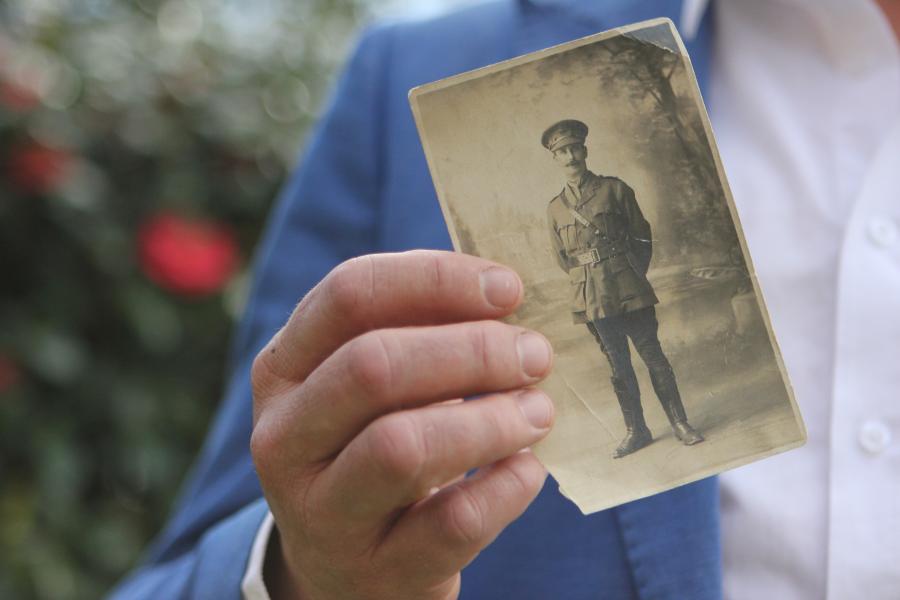
Phillip Johnson's great-grandfather Frederick Richard Johnson.
“The magnitude of loss is very overwhelming,” Phillip said.
“I wanted to design a tribute that was respectful, that was moving, that would allow people to slow down and connect with this field of 62,000 poppies in honour of the 62,000 Australians who lost their lives in the First World War.
“It’s just beautiful to think that people back here in Australia – maybe in Ballarat, maybe in Canberra, knitting or crocheting a poppy in honour of their families – have all united and come together.
“Every individual poppy is unique, and they’ve been made by people around the world who have their own personal connections to this project, and I think that’s what’s so beautiful.
“I believe this is a tribute that is going to go down in Australian history, and it’s a tribute I urge all Australians to come, and experience, and to connect with.”
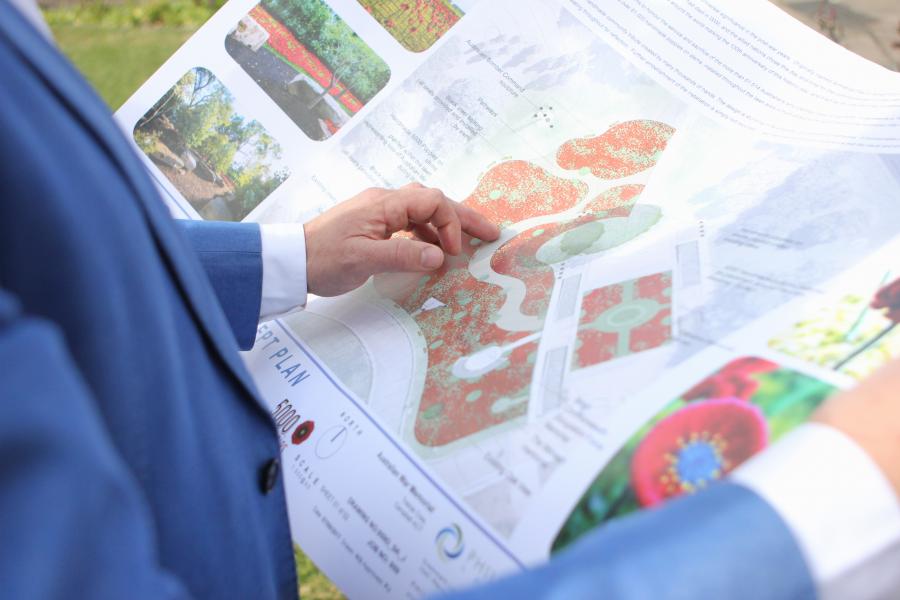
Phillip Johnson: "“I urge everyone to come and see this amazing tribute."
Phillip first became involved in the 5,000 Poppies when he was introduced to one of the co-founders, Lynn Berry, five years ago.
In 2013, Lynn and her sister-in-law, Margaret Knight, set out to knit 120 poppies in honour of their fathers’ service during the Second World War, but their small personal tribute soon became a massive community project that would capture the public imagination and take them around the world.
Together, they carpeted the steps of Melbourne’s Federation Square with 260,000 poppies for Anzac Day 2015 before taking the entire installation to London for the Chelsea Flower Show and to the battlefields of France for the centenary of the battle of Fromelles.
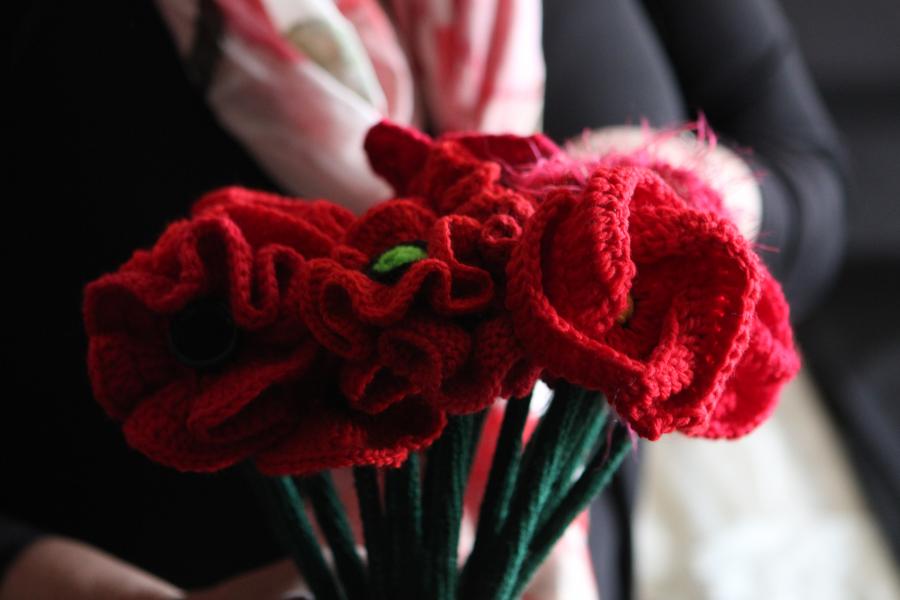
Now, five years later, some 50,000 volunteers have made more than 300,000 poppies and devoted more than a million hours to the project, culminating in the 62,000 Poppies display at the Memorial to commemorate Remembrance Day 2018 and the centenary of the Armistice.
For Phillip, the 62,000 Poppies display at the Memorial is particularly special. His great-grandfather was killed just weeks before the war ended.
“He was pretty much the same age as I am now, and he died pretty much on the day that we start to plant the poppies at the Australian War Memorial,” Phillip said.
“There was this beautiful letter that he wrote back home to his wife: ‘Last night Mabel, I had the most beautiful dream, about holding your hand, walking along our creek, Reedy Creek, just north of Melbourne, and it was the most magical dream.’ And then he woke up, and he was still in the trenches, and he never returned.”
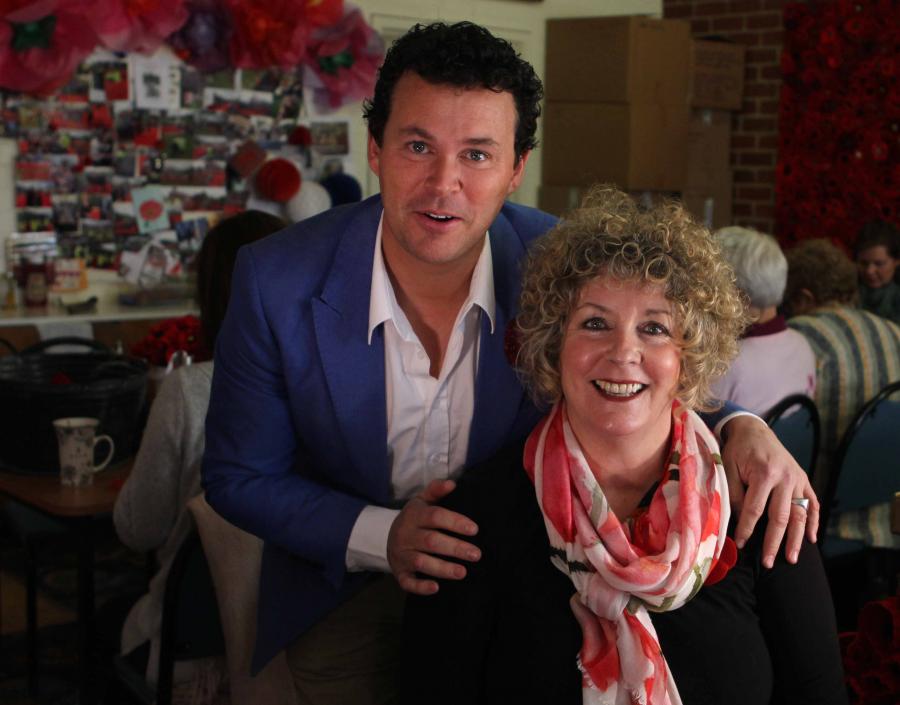
Landscape designer Phillip Johnson with 5,000 Poppies co-founder Lynn Berry.
Frederick Richard Johnson was managing a gold mine in country Victoria when he enlisted in March 1916 at the age of 43 and 10 months. He said goodbye to his wife and two young children for what would be the last time, and embarked for overseas service in May 1917, serving as a Lieutenant with the 1st Australian Tunnelling Company.
He was greatly admired by his men and was known as a kind and sensitive man – writing scores of letters to his wife and children back home in Australia and even sponsoring an orphaned Belgian child to be cared for by a friend in England.
It was just six weeks before the end of the war when Frederick was killed. He was part of a road reconnaissance party near the French village of Bony during the attack on the Hindenburg Line at Bellicourt on 29 September 1918. They were inspecting a rural road for mines as the infantry moved forward when a shell burst alongside them, severely wounding Frederick in the thigh and elbow. He was taken to the 12th Casualty Clearing Station, but died the following afternoon.
He was 46 years old and is buried in Tincourt New British Cemetery near Péronne. But his service and sacrifice have never been forgotten.
His great-grandson Phillip has visited Frederick’s grave twice. The second time was after the 5,000 Poppies project planted 26,000 poppies at the foot of the “Cobbers” sculpture in the Australian Memorial Park at Fromelles to commemorate the centenary of the battle.
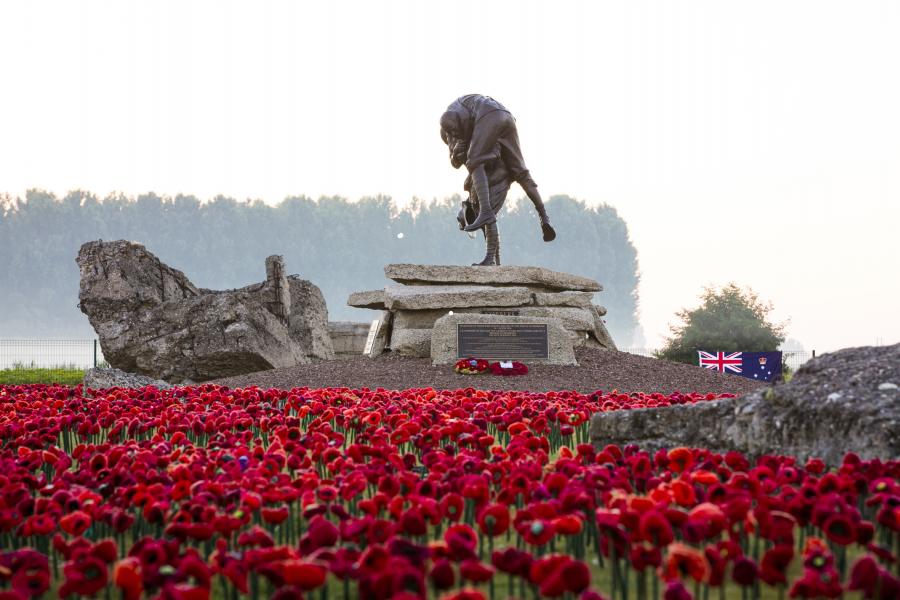
Fromelles in 2016. Photo: Claire Takacs
“It’s an overwhelming feeling,” Phillip said. “He passed away five days before Australia was pulled off the front line in Péronne. When my father and my brother visited his grave about 25 years ago, they met a lovely Frenchman, a Rotarian, and he said he just couldn’t thank Australia enough for what they did. Every year since, he’s been going to Frederick’s gravesite, and putting some eucalypt leaves there, cleaning the grave and sending photos home to Australia.
“It’s extraordinary… I just can’t imagine in this day and age, leaving my family for four years, and being so close to returning home, and then not returning. My great-grandmother thought he’d survived because of the delay in communication … But she left the gold mine and never returned.”
For Phillip, it’s important to remember the sacrifices of those like his great-grandfather who fought during the First World War.
“It’s a part of our Australian history and part of what’s made Australia the incredible place that we have today,” he said. “I urge everyone to come and see this amazing tribute. It’s a once in a lifetime opportunity … and to help bring this amazing community project to the Australian War Memorial has been an absolute honour.”
The 62,000 Poppies display will be open from 9am to 10pm daily from October 5 to November 11 as part of the Memorial’s five-week Honour their Spirit commemorative program marking the centenary of the Armistice.
Read the story behind the 5,000 Poppies project here. Watch the video here.